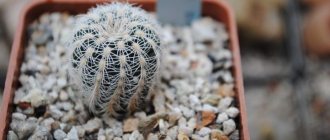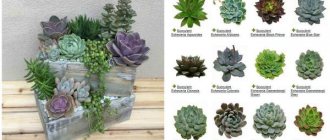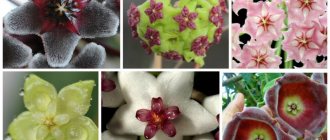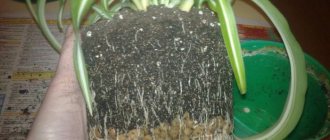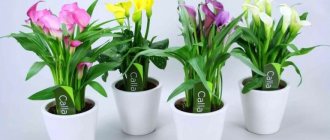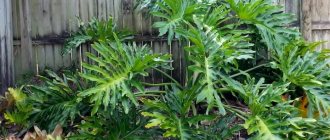Aptenia plant literally translates as “wingless” or a flower that begins to open its petals at noon. This succulent belongs to the Aizaceae family.
Aptenia has large fleshy shoots, its leaves are shaped like a heart. The inflorescences are small, pink, red or blue, formed on the side shoots .
Flowering time
Flowering of the crop is observed throughout the warm period of the year from April to the end of August.
Inflorescences appear at lunchtime, but the flowers do not always open fully ; this requires good, bright lighting.
Important! In winter, the plant goes into a dormant state to gain strength.
Varieties of aptenia
There are three types of athenia for growing in a flowerbed or in a room :
Apthenia cordifolia
Aptenia cordifolia is a fast-growing crop; the height of its shoots does not exceed 25 centimeters. The bush is spreading with fleshy branches of oval or tetrahedral shape . The shoots do not exceed 60 centimeters.
The leaves are fleshy, lancet-shaped, standard bright green in color, the length of the vegetative organs is up to 3 centimeters. The inflorescences are located one at a time on the plant, they are small with pink, purple or crimson petals.
The diameter of the flowers does not exceed 1.5 centimeters ; they are formed in the axils of the leaves, sometimes in the upper part of the shoots.
Apthenia lanceolate
It has dark green leaves shaped like a medical instrument with a rough surface. The stems are large, up to 80 centimeters in length, the flowers are beautiful, but small, consisting of many petals.
The inflorescences open only in good light, the petals are red or purple .
Aptenia variegata
Aptenia variegata differs from other varieties in the reduced size of the vegetative parts (inflorescences, shoots and leaves). Another distinctive feature of this crop is leaf spotting.
This is due to the presence of mutant cells in vegetative organs . They do not take part in the process of photosynthesis, resulting in a spotty color that is different from the standard. The spots can be of any size and shape.
Note! Variegated aptenia is considered a chimera crop, which complicates care. In such a plant, mutant cells exist at the expense of normally developed cells in which photosynthesis occurs.
Home care
even an inexperienced gardener can take care of apthenia at home .
The plant develops well in illuminated places, the surface of the leaves does not suffer from constant exposure to sunlight.
Lighting
Aptenia is considered a light-loving crop; when growing this plant at home, pots should be placed on the south-eastern or south-western window sills of the room .
In summer, at noon, crops are shaded or the temperature is reduced by ventilating the room. When there is a lack of lighting, athenia grows poorly, its shoots begin to stretch, and few inflorescences are formed.
Advice! In the summer, the pot with a flower is taken out to the terrace or balcony, and is gradually accustomed to natural light.
Some gardeners practice care and propagation in the open ground in a flower bed. This plant grows well, but it needs to be planted in places well lit by the sun .
In such areas, air currents always move, so the crop will not overheat. In winter, flower pots are placed on southern windowsills, where the lighting is maximum.
Temperature
In warm weather, the temperature in the room should be at 20-24 degrees . In autumn and winter, when the plant is dormant, it is reduced to 8-10 degrees.
Important! If it is not possible to observe the necessary regime during the wintering of aptenia, its shoots will stretch and the leaves will turn yellow, the crop will not be able to form inflorescences. If there is no cool room, add additional lighting with fluorescent lamps with a power of 50 watts or higher.
Watering
It is necessary to moisten the soil under the plant regularly in summer and spring; in winter, watering is reduced. Such work is carried out as the earthen coma dries out; excess moisture in the soil will cause rotting of the roots.
Air humidity
Dry air does not affect the development of the crop; there is no need to spray the leaves. In winter, place the flower away from heating devices so that it does not overheat.
As you know, apthenia can absorb the required amount of moisture from the air. To do this, place a small container of liquid next to the pot.
Top dressing
, liquid fertilizers with a minimum amount of nitrogen are applied during aptenia . The frequency of fertilization is once every two weeks.
The soil
is suitable for growing a flower , but you can make the soil yourself . For this you will need:
- 1 part turf soil;
- 1 part leaf soil;
- 1 part peat;
- 1 part sand.
Note! After thoroughly mixing all the components, add a little lime to the composition to reduce the acidity of the soil.
Rest period
To get good, abundant flowering, the apthenia must rest. The dormant period of this plant begins in the last ten days of October and ends in mid-March .
When setting the crop to rest, the temperature indicators are maintained at 8-10 degrees ; with an increase in indicators, foliage may fall and there will be no flowering.
Important! If the gardener cannot find a cool room in the apartment, he should install additional lighting above the crop, for example, fluorescent lamps, which will promote the normal development of aptenia.
Trimming
The plant does not receive stress after formative pruning. Similar work is carried out in the autumn or spring , but in this case the crop blooms later.
Aptenia may shed some of its leaves in winter. In this case, pruning of the bush should be done in February.
Advice! Use cuttings left over from autumn pruning for rooting. This way you can get additional plants.
Transfer
The root system of aptenia is characterized by intensive growth rates, so the crop needs to be replanted once every two years.
Similar operations are carried out in the spring, for this purpose a pot of larger diameter is selected and a small layer of pebbles or expanded clay is poured onto the bottom.
At the next stage of work, we remove the plant from the old container using the transshipment method, so as not to damage the earthen ball. Then we compress the crop with new soil prepared from turf and leaf soil, coarse sand and peat.
The first watering of the crop is carried out 3-5 days after transplantation . It is recommended to use warm water to moisturize.
This video talks about growing apthenia and shows how to transplant a plant by transshipment.
Description
In the wild, athenia is an evergreen shrub classified as a succulent. Its leaves are thick, they contain a supply of moisture and necessary substances in case of a dry period. A characteristic feature is the rapid growth of shoots, which makes it easy to recover from breakdowns or strong winds. The branches of some species can grow several meters long, and if the flower grows high, they hang down spectacularly.
The homeland of the shrub is South Africa, that is, aptenia is not afraid of heat and sun. Flowering begins in spring and with good care continues throughout the summer. The buds appear at the tops of the shoots, and after opening, the entire plant is decorated with pink or crimson inflorescences.
The roots are unusually strong for succulents. At a young age, the branches grow upward, and over time, due to their own weight, they lie down. At home, the flower can be grown as a subshrub or as an hanging plant.
Reproduction
There are several options for propagating apthenia. Let's take a closer look at each of them.
Seed method
In this case, surface sowing of grains into a nutrient substrate consisting of light- textured soil or moistened sand .
Seeds germinate quickly, but for this you need to provide favorable conditions - good lighting, as well as a temperature within 21-24 degrees.
Young plants are watered with a moderate amount of water ; with constant intensive watering, the root system rots.
Cultures are transplanted into separate containers at one month of age. For their normal development, a nutrient mixture of turf and leaf soil and sand . All of these components are mixed in equal proportions.
Flowers are placed in a shaded place where the temperature is maintained at 16 to 18 degrees. Plants are watered every day using water at room temperature .
Cutting method
This video tells how to care for the interesting and unpretentious plant Apthenia and shows its propagation by cuttings.
The vegetative parts that remain
after pruning are stored in a shaded, dry room for 2-3 hours.
After this, the vegetative organs are planted in containers with wet sand, as shown in the photo. Important! For rooting, you can place the cuttings in water with the addition of coal. When the first roots appear, they are moved to separate containers and cared for like other plants.
Temperature
In winter, it is advisable to maintain the temperature between 8 and 10 degrees. If the air temperature exceeds the recommended one, the succulent will need additional lighting.
In the warm season, you need to maintain the temperature around 22-25 degrees. By autumn, you need to gradually reduce the temperature to winter levels.
Diseases and pests
Aptenia resists the effects of various diseases well and is not damaged by pests. Problems with flower development arise due to improper care .
Thus, the cause of leaves falling on a crop is improper watering (drying out the soil or stagnant moisture in the pot), as well as overwintering the plant in a warm room.
Lack of flowering occurs due to a lack of natural light or the absence of a dormant period for the plant. Follow the rules for caring for aphthenia and you will get a beautiful lush flower with a huge number of inflorescences.
Lighting
It is better to gradually accustom the succulent to direct sunlight, although apthenia thrives in direct sunlight, so in summer you can place the plant outside.
If you decide to leave the plant at home, then windows facing west and east are suitable for this. On the south side, aptenia may experience burns, and on the north side there will be insufficient light.

